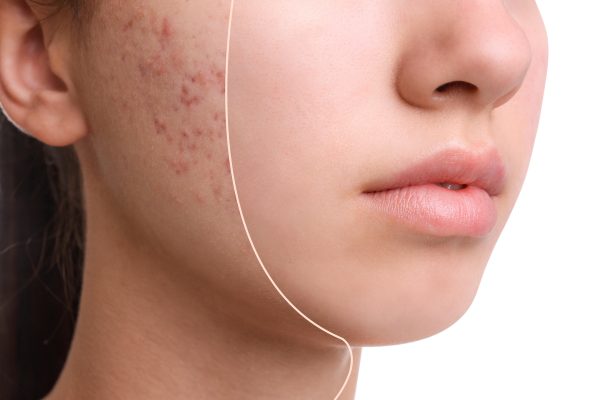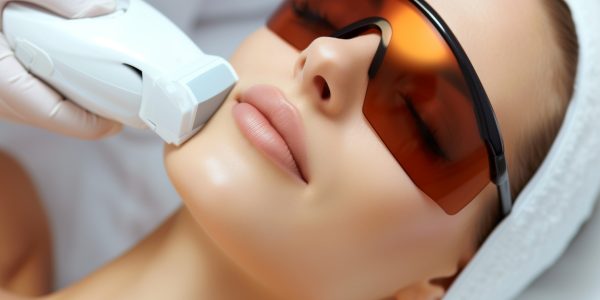You know that feeling when you’ve finally conquered a huge breakout, only to be left with the aftermath? Those pesky scars that seem to linger like unwanted party guests? Countless individuals battle the emotional aftermath of acne long after the blemishes themselves have faded.
Each scar is unique. Your dermatologist can assess your specific needs and craft a personalized treatment plan that’s both safe and effective. These days, several methods address this. This article will explore the three dermatologist-approved methods that will help you battle this common concern and pave your way to smoother, more radiant skin.

Understanding Acne Scars
Think of your skin as a canvas. A pimple is like a splash of paint, temporary and fixable. But an acne scar? That’s more like a tear in the canvas, changing its very texture. Understanding how these scars form is crucial to finding the right fix.
The types of acne scars
Let’s break it down into two main categories:
Atrophic scars
These are the sunken, pitted scars. They occur when your body doesn’t make enough collagen during healing, leaving a dent. There are a few different types:
- Icepick scar: Deep, narrow punctures, like someone took an ice pick to your face.
- Boxcar scar: Wider depressions with sharp edges, resembling miniature craters.
- Rolling scar: Shallow depressions with gentle, sloping edges, giving your skin a wavy texture.
Hypertrophic scars
These are the raised, lumpy scars. They happen when your body goes into collagen overdrive, producing too much during healing. There’s a subtype here too:
- Keloids: These are like hypertrophic scars on steroids. They grow beyond the original wound and can be itchy or painful.
If you’re struggling with acne scars there are many excellent options for acne scar treatment Singapore that can help you achieve smoother, clearer skin.
The severity scale
The severity of your scars will often dictate the best treatment approach:
- Mild: If you have a few shallow scars, topical treatments or minimally invasive procedures might do the trick.
- Moderate: For more noticeable scars, you might need something a bit stronger, like laser therapy or chemical peels.
- Severe: Extensive or deep scars may require a combination of treatments, potentially including surgical options.
It’s important to consult with a dermatologist to determine the severity of your scars and the best course of treatment. Now, here are the dermatologist-approved methods you can consider:
Laser Therapy
These devices use focused beams of light to break down scar tissue and trigger your skin’s natural healing processes.
The different types
- Ablative lasers: These tools vaporize the top layer of skin to smooth out surface imperfections like a high-tech sanding tool. This makes them ideal for tackling shallow scars and uneven textures.
- Non-ablative lasers: These work beneath the surface, stimulating collagen production without removing the skin. Think of it like adding reinforcement to a weakened structure, plumping up and softening the appearance of deeper scars.
- Fractional lasers: These create microscopic treatment zones within the scar, allowing for faster healing and minimal downtime.
What to expect from laser therapy
- Patience is key: Don’t expect instant results. You’ll likely need multiple sessions spaced several weeks apart to see significant improvement.
- Downtime is normal: Depending on the type of laser used, you might experience some redness, swelling, or peeling for a few days after treatment.
- Sun protection is non-negotiable: Your skin will be extra sensitive to the sun post-treatment, so wearing sunscreen daily is crucial.

While laser therapy isn’t a magic bullet, it can be a game-changer for those struggling with stubborn acne scars.
Chemical Peels
Your skin is a canvas, and acne scars are like stubborn stains. A chemical peel acts as a powerful cleaning solution, wiping away the top layers to reveal a brighter, smoother surface underneath. They come in different strengths, each targeting different levels of skin concerns:
Superficial peels
These are the gentlest. They work on the outermost layer of skin, improving texture, brightening tone, and minimizing mild scarring.
Medium peels
These penetrate a bit deeper, tackling moderate scars, sun damage, and fine lines.
Deep peels
These are reserved for severe scarring and wrinkles. It’s like a complete renovation, requiring more downtime but delivering dramatic results.
The procedure involves applying a chemical solution to your skin, which will cause it to peel off over the next few days. You might experience some redness, tingling, or even mild discomfort during the process, but the fresh, radiant skin that emerges will be worth it.
After a chemical peel, your skin will be more sensitive than usual, so it’s important to follow your dermatologist’s aftercare instructions to the letter. This usually includes staying out of the sun, moisturizing regularly, and avoiding harsh skincare products.
Dermal Fillers
Dermal fillers are like a mini facelift without the surgery, plumping up sunken areas and restoring lost volume for a smoother, more youthful appearance. There are different types of fillers, each with its own advantages:
Hyaluronic Acid (HA)
Hyaluronic acid is a naturally occurring sugar found in your skin. It’s like a sponge, attracting and holding onto water to create a plumping effect. These fillers are temporary, lasting anywhere from 6 to 18 months.
Collagen
This protein is the building block of your skin, providing structure and elasticity. Collagen fillers can stimulate your body’s own collagen production for longer-lasting results.
Poly-L-lactic Acid (PLLA)
This synthetic substance works by gradually stimulating your skin’s natural collagen production. Results are more gradual but can last up to two years.
Dermal fillers are quick and relatively painless, with most patients returning to their daily activities immediately. Your dermatologist will inject the product into the targeted areas, instantly plumping them up. The results are immediate but continue to improve over the next few weeks as your skin responds to the filler.
Remember, dermal fillers are a temporary fix, not a permanent solution. You’ll need touch-up treatments to maintain the results. Additionally, they’re not suitable for all types of acne scars, so it’s important to talk to your dermatologist to see if they’re right for you.
Final Thoughts
Battling acne scars is a journey, not a sprint. But with the right knowledge and a trusted dermatologist by your side, you can confidently stride towards smoother, clearer skin. Don’t let those scars hold you back; take the first step towards reclaiming your confidence and embracing a brighter complexion today. Your skin deserves it.

